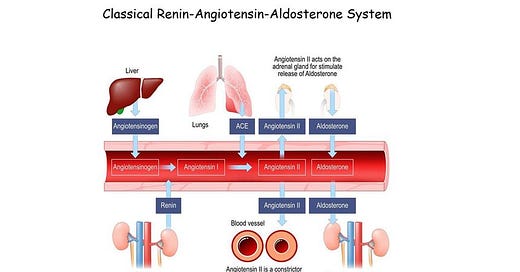Did we get Covid-19 disease mechanisms all wrong? Part 2
Why did scientists come up with the ACE2 receptor theory in the first place? The answer’s in the kidneys...
This is the second instalment of a three-part series by my guest author Janine Gallizia. To read Part 1, click here.
If ACE2 is not the SARS-CoV-2 receptor, as posited in Part 1, why is there a cascade of symptoms resembling ACE2 deficiency in Covid-19 patients? Get Well Fast author Janine Gallizia offers a clear and compelling hypothesis in this next instalment. Read on!
Part 2: The Inhibitor
By Janine Gallizia
As we saw in Part 1, in early 2020 the ACE2 receptor was proposed as the main site of viral entry allowing SARS-CoV-2 to infiltrate human cells.
Scientists proposed this primarily for two reasons: firstly, ACE2 was believed to be the compatible cell receptor for the first SARS-CoV (Severe Acute Respiratory Syndrome) viral outbreak that originated in Foshan, Guangdong province in China, in November 2002. The first SARS-CoV epidemic occurred from November 2002 to July 2003, and mostly affected countries in Asia, including China, Hong Kong, Taiwan, and Singapore. When the World Health Organization (WHO) declared a similar viral outbreak on March 11, 2020, sparked by a similar coronavirus in nearby Wuhan, Hubei Province in China, just 650km (400 miles) from Foshan, a series of parallels were logically drawn.
This full post is available to paid subscribers today and all subscribers next week. We trust you find it informative. Thank you for your support.


